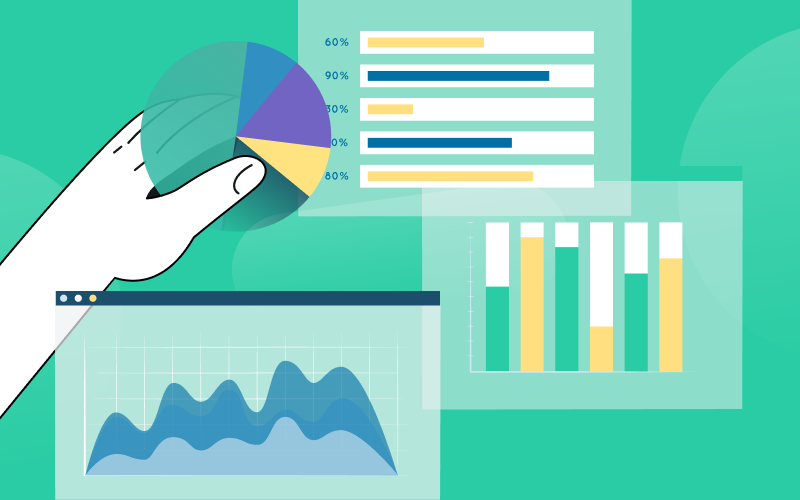
6 ways to improve forecast accuracy
Learn more ->

, Chief of Staff, Abacum
7 min read · Published: February 10, 2023

When working on your SaaS business financial model, are you confident that the figures and estimates you are getting are reliable? Do they accurately reflect reality, or do they just appear to do so on the surface?
Developing a financial model for your company is an important exercise in the journey to success. Yet without taking the right steps, business models can quickly become out-of-date and irrelevant to decision-makers. This makes accuracy both an art and a science. All in all, financial forecasting models must be precise and accurate to be useful.
But how can you guarantee both the accuracy and precision of your model? Do you have any doubts about which factor to prioritize?
Precision and accuracy can seem complex concepts at first. However, with practice and guidance, it is possible to use them effectively for financial modeling purposes. In this article, we will explain the difference between precision and accuracy, offer advice on how to improve both when creating a financial model, as well as showcase tools that can help you achieve better results when working on one.
Precision and accuracy are two terms that are often used interchangeably, but they have distinct meanings, and both are particularly important for controllers and CFOs.
Precision is the degree of exactness or refinement with which a measurement is made. It is the ability to repeat the same result over and over again with minimal variation. On the other hand, accuracy is how close a measurement is to its true value. It measures how close an estimate or prediction is to its actual outcome.
Even with a precise model, there are still many factors that can affect the outcome of your predictions. For example, external events like changes in market conditions or shifts in customer behavior can drastically alter the course of your business, making even the most precise forecasts inaccurate. Thus, to ensure accuracy in financial modeling, it is important to take into account both precision and external influences when creating a financial forecast.
With an accurate view of where your business stands financially, you can make strategic decisions and ensure sustainable future growth.
When it comes to operational decisions, many business owners want quick results or a fast turnaround. While this may generate favorable results in the short term, it doesn’t necessarily mean that these small victories can withstand the changing tides of market trends and customer demand over time.
Data is becoming a valuable commodity for businesses in the digital age. As such, organizations need to analyze their information quickly and accurately to make sound decisions. And so the question arises: Should we prioritize precise, immediate decision-making or put greater emphasis on the long run?
A SaaS business financial model needs correct information, but most importantly, accurate estimation, to be relevant and helpful. Predictions that are difficult to interpret and update in light of external conditions are useless. So, there is no point in having an extremely precise model if you cannot make decisions based on relevant real-life findings.
The ability to foresee what is expected to happen allows you to take appropriate action and gain an advantage over your competition. Therefore, when creating a solid financial model, long-term accuracy has proven to be more effective than short-term precision.
A financial model should provide clarity and ease of use above all. It should be simple enough for anyone on the executive team to update, allowing for easy decision-making. This means that everyone needs to understand how the numbers work, not just what the numbers are.
By focusing on long-term accuracy, businesses can make better decisions with more confidence in their data. Which will lead to improved financial performance and profitability for the company as a whole.
Are you looking for ways to improve the accuracy of your business model? If so, getting your processes in check is key. Many businesses fail due to a lack of foresight and analysis when making decisions.
To succeed, one must learn the best methods for improving the accuracy of a model and implement them strategically. This can help you plan for the future and open up new opportunities for growth and innovation.
For these reasons, it is worth considering some of the best practices outlined below so you can optimize your models’ accuracy.
Today, most businesses rely on data to make decisions. Data is required for everything from financial planning to marketing strategies, launch plans, competitive analysis, and so on.
Yet, many businesses suffer from data inaccuracies due to a lack of cleanliness in their data sources. Which has a direct impact on the accuracy of the business models.
All models should be built based on solid financial statements, follow a reliable business plan, and be presented in a digestible format.
Thus, using clean and consistent data has become critical to minimizing errors in the financial modeling process caused by obsolete information.
Automation can help you streamline the process of creating a financial model, making it easier to update and maintain accuracy over time. Automated processes can also help reduce human error, which is one of the most common causes of inaccuracies in financial models.
Besides, implementing automated processes can also help you save time, allowing your Finance team to focus on business-critical tasks.
“There’s a lot of automation that can happen that isn’t a replacement of humans, but of mind-numbing behavior.”
– Stewart Butterfield
It is important to review the assumptions used in your model regularly to ensure they remain valid. This means double-checking all data points and making sure that your financial projections are realistic and based on reliable sources.
By monitoring changes over a period of time, you will be able to identify any issues or discrepancies early on. This will allow you to recalibrate model components if necessary to guarantee that your model remains accurate and up to date.
Finally, it is important to test your model against real-world scenarios before making decisions based on its results.
Using scenario planning is a great way to run, test, and validate different hypotheses and see how these might affect your entire model. By taking the context of your organization into account, you will optimize the accuracy of your forecasts, identify possible roadblocks and opportunities, and be realistic about the future of your business.
“You can build a statistical model and that’s all well and good, but if you’re dealing with a new type of financial instrument, for example, or a new type of situation – then the choices you’re making are pretty arbitrary in a lot of respects.”
– Nate Silver
Financial modeling is an important aspect of understanding and managing a company’s finances. Whether it is used for budgeting, cash flow statements, or sales forecasts, making sure your models are accurate is essential. It is not enough to simply use a few generic financial projection templates or basic functions from Excel. You need the right set of tools to make sure that your forecasting models are as accurate as possible.
Are you wondering what type of tool you should look for?
Financial modeling software will help you make more informed decisions about your business’s financial health and position, as well as set realistic financial goals for the future.
At Abacum, we created an FP&A solution to assist Finance professionals in getting greater insights, faster. With 1-click, you can increase the accuracy of your future estimates and move from manual, error-prone processes to automated ones.
Request a demo now to find out how our product can help you improve the accuracy of your financial modeling process.
Discover how finance automation drives better decision making